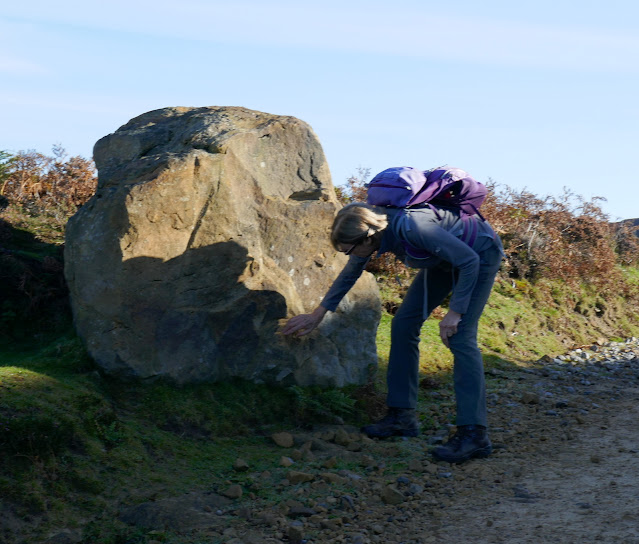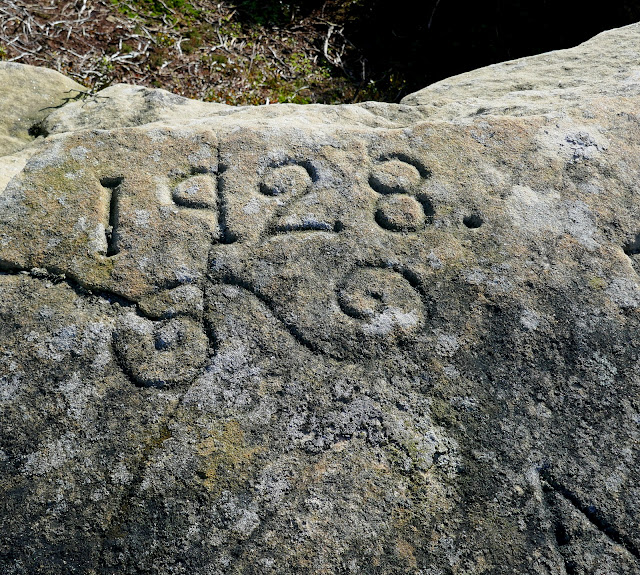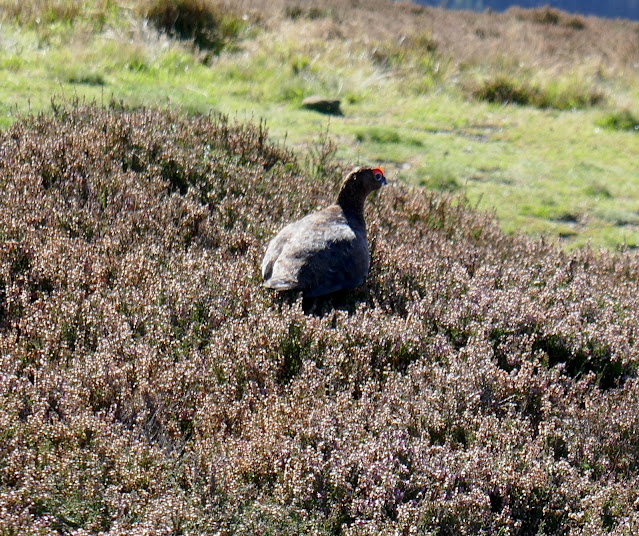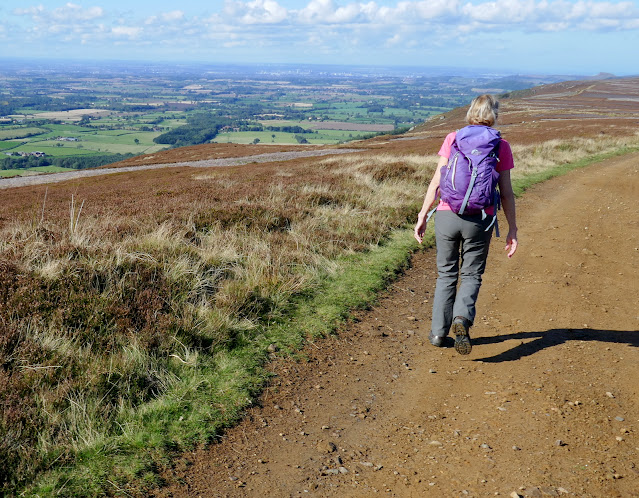Bank Foot to Upper Baysdale and Burton Howe
11.3 miles Fine and sunny


On reaching the top we paused to admire the view and get our breath back. There are fine views over Ingleby Greenhow and Battersby Junction and we picked out familiar land marks before stepping over a chain and following a moor path onto Ingleby Moor.
After crossing the chain barrier we joined a smaller track leading across Ingleby Moor, crossing Black Beck about a mile further on before a slight climb to bear left onto Middle Head Road. As we walked we were buzzed by a low flying jet.
Shortly after crossing Black Beck we turned left at a junction and turned on to Middle Head Road. A short walk brought us to an interesting group of large boulders known as the Cheese Stones and we walked over to have a better view.
The Cheese Stones are a group of sandstone boulders that look down into the Baysdale Valley. We found some interesting graffitti including what appears to be a carving made by a father and later his son, separated by 24 years.
Here is a photo of Tom Scott Burns at the Cheese Stones on 15th November 2001. With many thanks to Don Burluraux and NYCam.
See http://www.nymcam.co.uk/111501.htm
Continuing along the moor we walked past the remains of a medieval cross and soon looked down onto Baysdale and the imposing building of Baysdale Abbey. We walked through forestry and reached the sheep meadows that slope down to the abbey where we found a suitable soft spot to sit and enjoy our coffee and scones with a fine view.
We finished our coffee and walked down to the Abbey and its farm buildings.
Tom Scott Burns explains that in the middle ages land rents for Baysdale were paid with the heads of wolves, which were numerous in the area, and it's easy to imagine how wild this enclosed ravine must have been in the 1300s, when cattle were over-wintered in the valley bottom.
TSB explains that Baysdale is derived from Basdale meaning Cow Shed Valley. The Abbey Farm has been renovated and is now marketed as holiday lets and we walked round the building, then followed the yellow way-marks uphill to Thorntree House.
Bat box at Abbey Farm
We receive a noisy welcome
Climbing to Thorntree House Farm
We passed Thorntree House and climbed through a forestry plantation to reach Baysdale Moor and as TSB relates, " an ever-unfolding sea of moorland".
Back on our track we soon reached the old disused coal pits of Armouth Wath, ('ford at beck's clearing').
Armouth Wath is a very bleak spot and life in the coal pits must have been hard. Excavation work has been done at the ruins of the four colliery buildings and revealed that the pits were 106' deep.
We left following the colliers' track and a long climb brought us to the Bronze Age tumulus of Burton Howe.
There are several tumuli here, apparently dating from 4500 - 1400 BC, some still containing coffins and cremated remains.
Our path now follows the escarpment across the open land of Ingleby Moor, locally known as Siberia, and devoid of interest until arriving at a well preserved standing stone near Tidy Brown Hill. We could make out the inscription 'Ingleby and Stoxley' on the front, ' Kirby and Helmsley 1757' on one side and 'Guis Boro' on the other.
Strangely, TSB doesn't mention this stone in his walk description.
We now had a two mile walk along the escarpment with fine views, heather to our right and the villages of Cleveland below us to the left.




























































